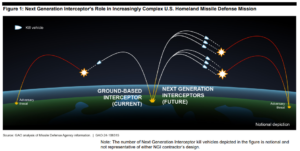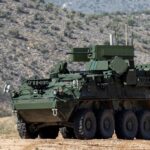
A new report from the Government Accountability Office (GAO) argued the Missile Defense Agency’s (MDA) Next Generation Interceptor (NGI) program faces challenges as it plans to overlap the design and production phases with an overly optimistic schedule. This report published on June 26, “Next Generation Interceptor Program Should Take Steps to Reduce Risk and Improve Efficiency,” said that while MDA’s NGI program is on track to start product development this year, the overlap in design and production activities could be…

 By
By 











